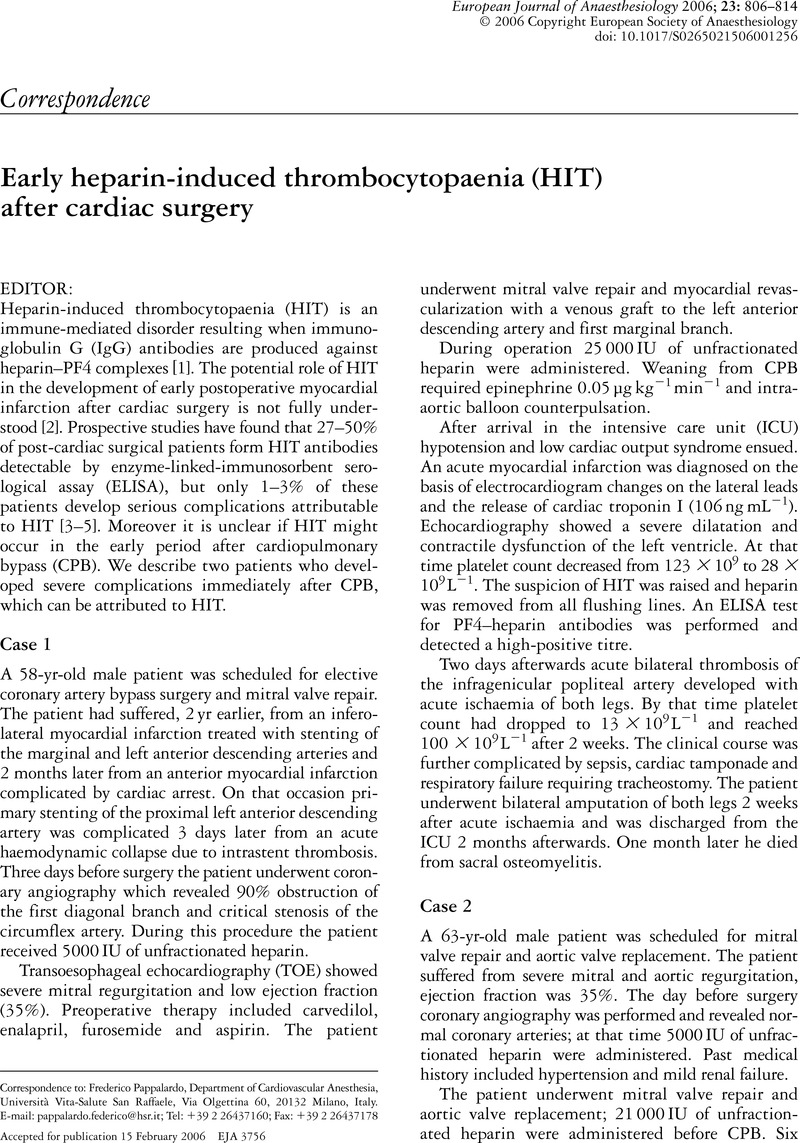Crossref Citations
This article has been cited by the following publications. This list is generated based on data provided by Crossref.
2007.
Current awareness: Pharmacoepidemiology and drug safety.
Pharmacoepidemiology and Drug Safety,
Vol. 16,
Issue. 3,
Kerendi, Faraz
Thourani, Vinod H.
Puskas, John D.
Kilgo, Patrick D.
Osgood, Michael
Guyton, Robert A.
and
Lattouf, Omar M.
2007.
Impact of Heparin-Induced Thrombocytopenia on Postoperative Outcomes After Cardiac Surgery.
The Annals of Thoracic Surgery,
Vol. 84,
Issue. 5,
p.
1548.
Kozek-Langenecker, S.A.
2008.
Direkte Thrombininhibitoren.
Der Anaesthesist,
Vol. 57,
Issue. 6,
p.
597.



